SHALLALAT
The study of metal
Valérie Pichot
ARCHAEOMETALLURGY AND ARCHAEOMETRY
In very many cases interpreting the archaeological vestiges connected to the production and working of metal is difficult. These vestiges are generally not very spectacular and often hard to understand. First of all because metal, of whatever type, has always been a precious material and therefore re-used, re-smelted, reworked…. Furthermore, the craftsmanship associated with metal leaves very few traces and one is thus forced to work mostly with residues found in the workshops.
In order for this work to be worthwhile, it is essential to study these remains by exploiting the connections between archaeology and archaeometry (taking into account all the archaeological data of the site and knowledge already acquired from other sites, but also that gained from ethnography and experimentation while applying the knowledge and techniques of exact science).
- Archaeometallurgy (or paleometallurgy) :
- The archaeology of mineral and metallurgical vestiges.
- Archaeometry :
- Any method of studying samples in a laboratory or in situ that results in specific measurements in numbers and/or scientifically recognised categories. It is the application of divers scientific tools to archaeology. Here the term refers to the study of metallurgical residue.
- In order to identify a type of metallurgical activity (transformation of the mineral, creation of an alloy, manufacture of an object…), one must undertake extremely close and methodical observations of the entirety of residues discovered. There are two procedures: macrography (examination with the naked eye of the ensemble of a metallurgical product that provides indications of, among other things, the type of physical and chemical treatments applied to the metal), and micrography (examination using a high magnification microscope that reveals the characteristics of a metal or an alloy and provides information concerning the constituents of a metallurgical product, its purity, structure and its history).
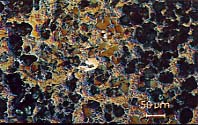
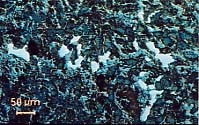
View through a high magnification microscope (smithing slag - Cricket ground excavation)
- Workshop :
- Archaeological site where residue from metallurgical work attests the presence of metalworking
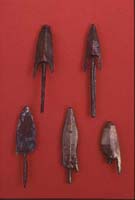
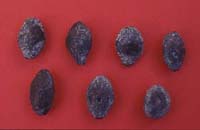
Weapons of the Hellenistic era (Cricket ground excavation) Bronze arrowheads and lead slingshot balls.
- (Workshop) Residue :
- Term used here to signify the ensemble of waste from a metallurgical workshop: slag, parts of furnaces etc.
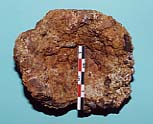
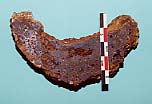
Smithing slag (view from above and section) . Cricket ground excavation